
By Director of
Land Stewardship
Jean Wiedenheft
If you had asked me in July what the biggest problems facing our forests are, I would have said:
 Lack of sunlight. There are too many trees in the forest. The shade causes soil erosion, fewer plant species, and limits the regeneration of some species, including pine and oak.
Lack of sunlight. There are too many trees in the forest. The shade causes soil erosion, fewer plant species, and limits the regeneration of some species, including pine and oak.- Lack of species diversity. When the forests were logged, frequently what regrew was whatever was planted, fast-growing, or opportunistic at the time. We now have a lot of boxelder and cottonwoods in the lowlands, and hackberries and maples in the uplands. There is nothing wrong with those species, but there isn’t room for other, slower-growing species to become established. This includes sycamores, white oaks and Kentucky coffee trees.
- Lack of age diversity. When wide open areas are planted, whether it is fallow fields or, logged forests, whether it is by humans or nature, the result is the same: a forest of trees that are all the same age. A population that is of uniform age creates long-term problems, including no young generations and lack of habitat. Different animals often rely on trees in different stages of growth for browsing on and living in.
- Invasive species. We have solid stands of mature black locust, as well as catalpas, tree of heaven, and mulberry. Invasive trees don’t just take the place of native trees, they spread. They seldom support the diverse wildlife native trees support.
What the derecho did in 45 minutes I couldn’t do in a lifetime of chainsaw running.
 It opened up the canopy. Sun-starved seedlings, including white pines, shagbark hickories, and white oaks now have the space to grow, mature and thrive. These young trees will be growing among the trees that are still standing, creating a healthy mixed-age canopy.
It opened up the canopy. Sun-starved seedlings, including white pines, shagbark hickories, and white oaks now have the space to grow, mature and thrive. These young trees will be growing among the trees that are still standing, creating a healthy mixed-age canopy.- Native sedges and wildflowers often need at least partial sunlight. If their seeds remain in the seed bank, or have blown in from other places, they now have room to grow and blossom. Plant roots frequently form denser matts in the soil than tree roots, combining to create a more stable soil that is less erosive.
- Increased microtopography. Oak root balls taller than me now point to the sky, leaving gaping holes in the subsoil. Pockets in the soil left by the uprooted trees will become ephemeral pools in the spring and fall. This will allow animals and plants that need moist environments an opportunity to expand their range.
- A host of animals and fungus live on dead wood. As the insect populations increase, animals that feed on them, including woodpeckers and bats, will also increase. As the wood decays, its nutrients will go back into the soil, creating soil high in organic material which supports greater diversity.
The forest created by the derecho is dramatically different, and currently incredibly stressful not only for us but for the wildlife that live there. Disruption and change are essential for the long-term health of the forest. How we support the forest community as it heals and regrows is crucial to maintaining it as a dynamic, vibrant, and diverse ecosystem.
What are our next steps?
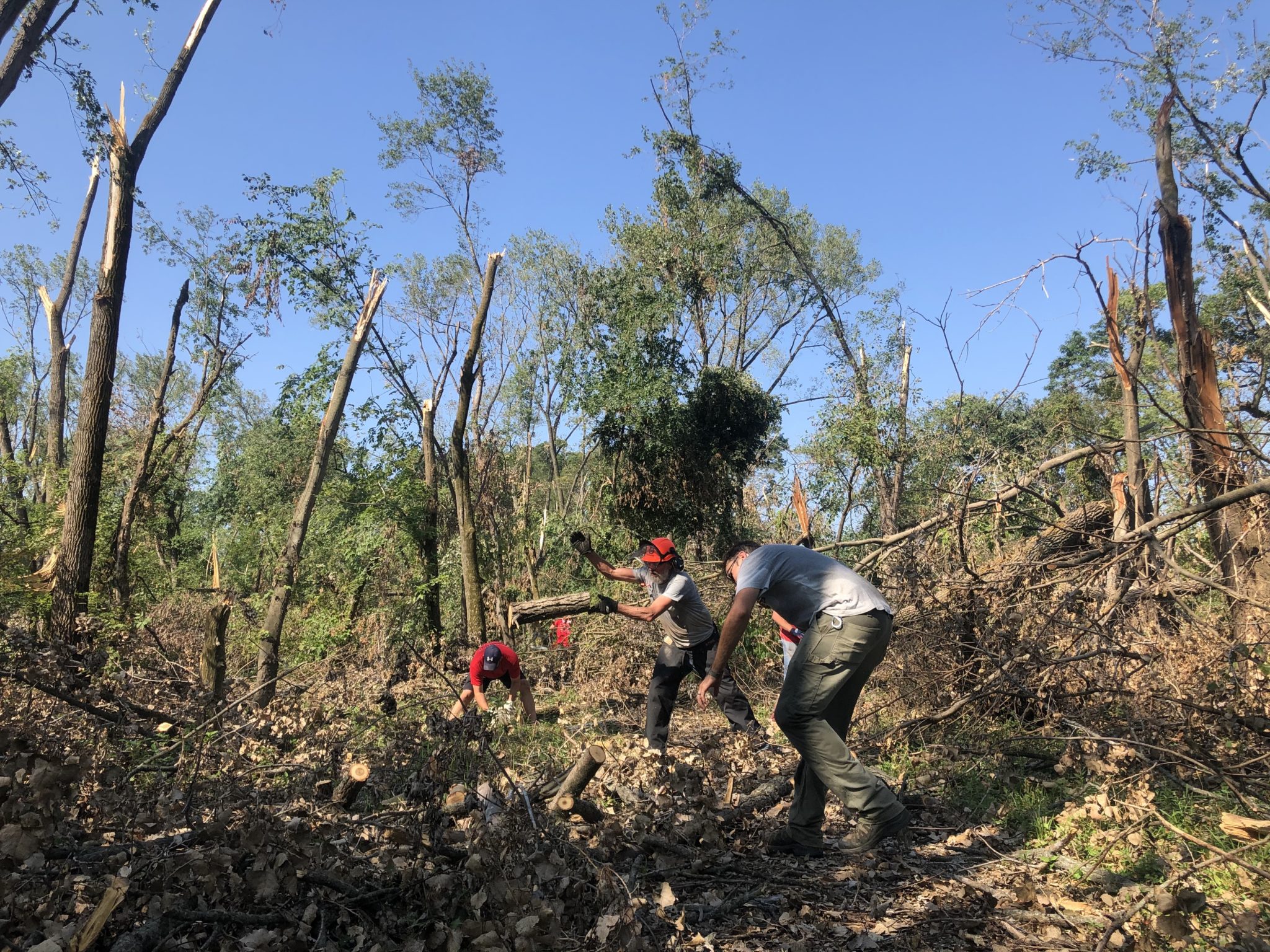 When moving brush and downed trees from trails and restoration areas, we are piling it, not stacking it as a wall along the edge of the area. This creates a friendlier environment for wildlife, who still need to move through the forest. If you remember what it was like driving around town the first few days after the derecho, that is what it is still like for the turkey, coyote, deer, fox and other wildlife. Their trails are buried under downed trees and their homes are gone. Brush piles help give them space to move around or refuge from predators.
When moving brush and downed trees from trails and restoration areas, we are piling it, not stacking it as a wall along the edge of the area. This creates a friendlier environment for wildlife, who still need to move through the forest. If you remember what it was like driving around town the first few days after the derecho, that is what it is still like for the turkey, coyote, deer, fox and other wildlife. Their trails are buried under downed trees and their homes are gone. Brush piles help give them space to move around or refuge from predators.
Where we lost mature trees, their progeny will be in the soil. They may still be in seed form, or they may be seedlings that try to grow every year, but get mowed off, nibbled off, or stunted by shade. As we clear areas, we will be looking for these young seedlings or trees and fencing them to protect them. It won’t just be a native tree species, it will be a direct descendent from trees that have lived here prior to settlement that will be ecologically well-suited to this particular environment, and avoids many of the problems associated with relocating trees.

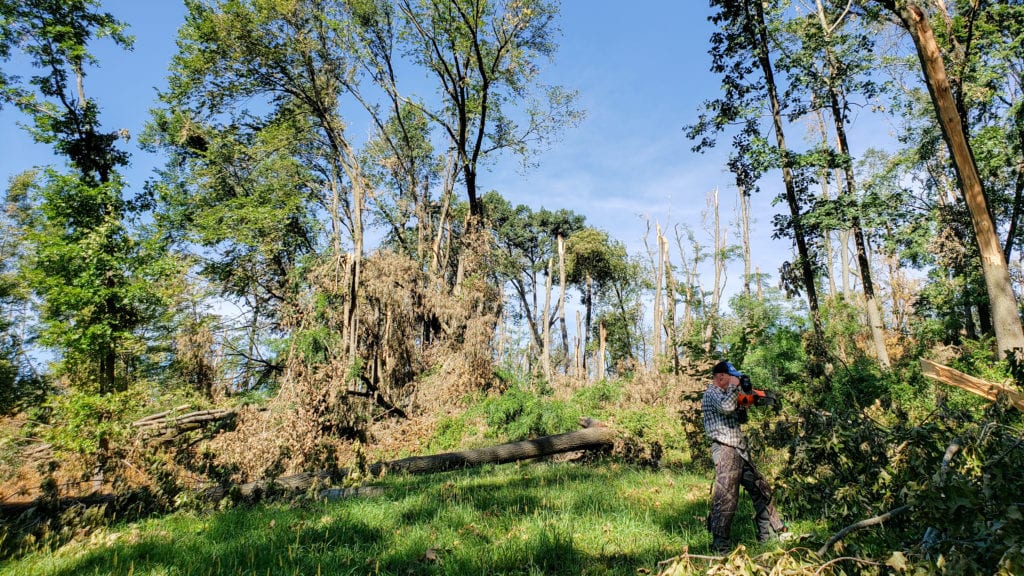
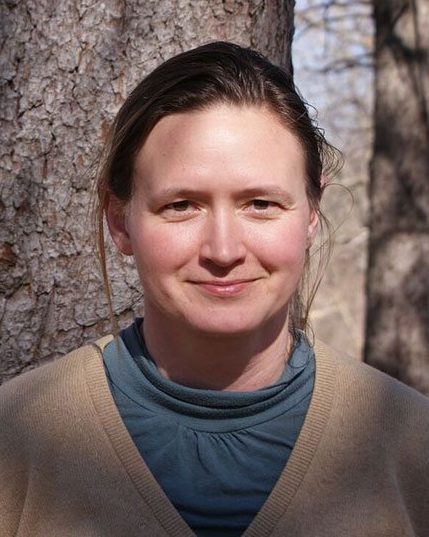
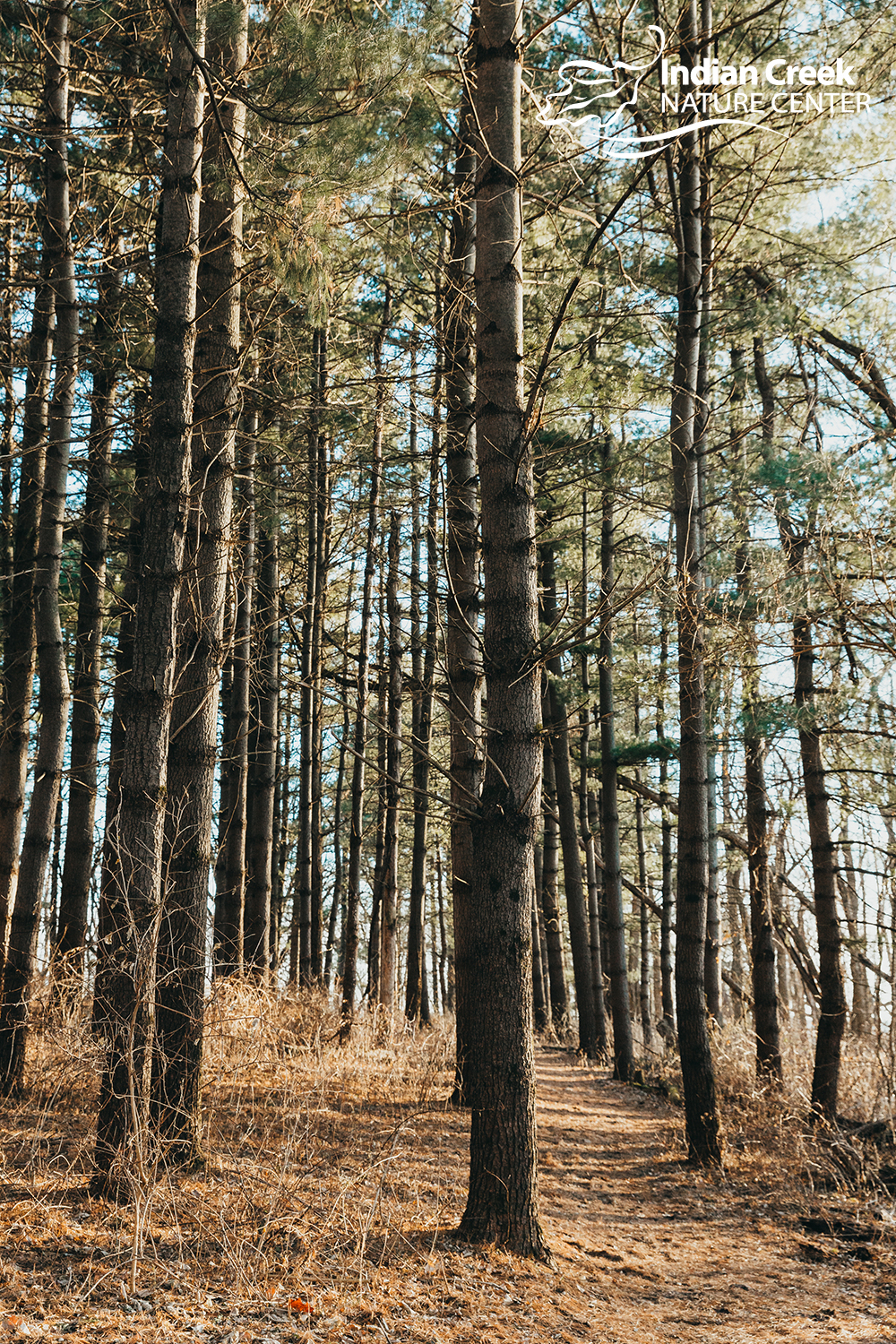 Lack of sunlight. There are too many trees in the forest. The shade causes soil erosion, fewer plant species, and limits the regeneration of some species, including pine and oak.
Lack of sunlight. There are too many trees in the forest. The shade causes soil erosion, fewer plant species, and limits the regeneration of some species, including pine and oak.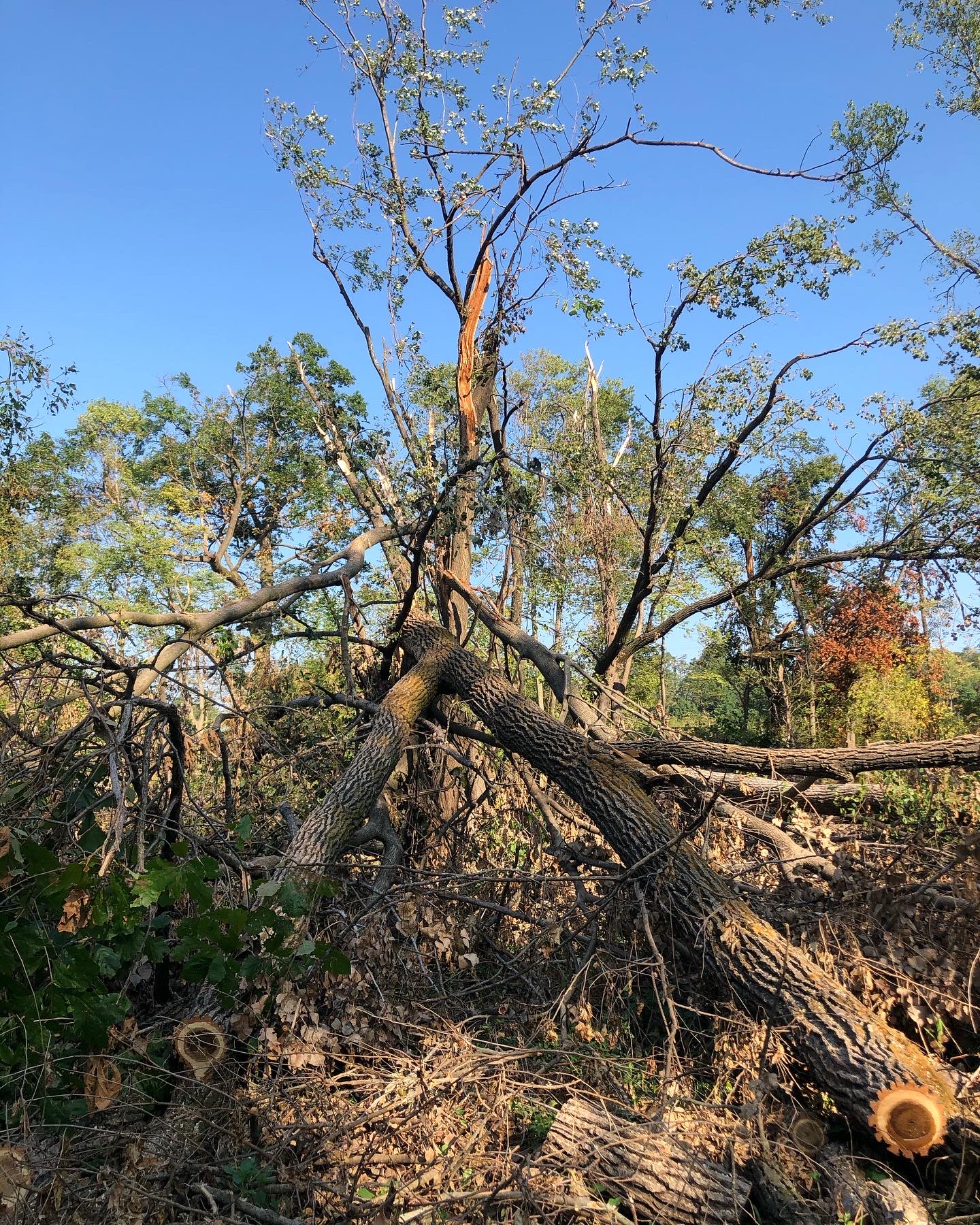 It opened up the canopy. Sun-starved seedlings, including white pines, shagbark hickories, and white oaks now have the space to grow, mature and thrive. These young trees will be growing among the trees that are still standing, creating a healthy mixed-age canopy.
It opened up the canopy. Sun-starved seedlings, including white pines, shagbark hickories, and white oaks now have the space to grow, mature and thrive. These young trees will be growing among the trees that are still standing, creating a healthy mixed-age canopy.